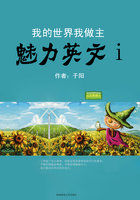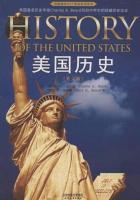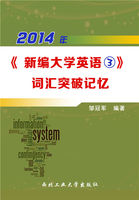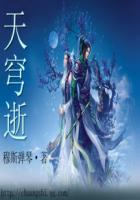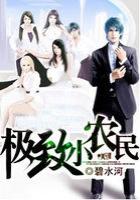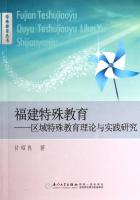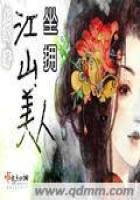交通管制
中西文化
在美国加州,如果是 DUI conviction (被判酒醉驾驶),则初犯也要罚款100美元至390美元不等,而且一律吊销驾照至少三个月。如果有两次以上的 DUI conviction,就要罚款 500美元,并且有可能被判长达四年的徒刑。
感觉上,美国人的观念比我们更有弹性,不会墨守成规。例如,若超速被拦下来,如果你说:“对不起,因为我赶着参加朋友的婚礼……”,警察通常会睁一只眼闭一只眼,说:“那好吧,下次别再让我抓到”。甚至有时驾驶人明明超速了二十英里,警察也会对你使个眼色,开给你超速十英里的罚单。
典型对话
1.醉酒驾车
A:Let's go someplace and have a drink tonight.
A:今晚出去喝一杯吧!
B:Aren't you worried about getting a DUI conviction?
B:你不担心被判酒醉驾驶吗?
A:Nothing to worry. The night club we're going to gives customers who are drunk a ride home. You have a pay for the ride, though.
A:没什么好担心的。我们要去的那一家夜总会会把喝醉的客人都送回家。不过,车费要自己出就是了。
2.道路禁行(1)
A:Hello, officer. Why is this road closed?
A:您好,警官。为什么前面不让走了?
B:Madam, this road is the route of marathon, it is now closed temporarily for the race.
B:女士,前面街道是马拉松赛的经过路线,这个时间车辆暂时禁止通行。
A:When will it be open?
A:要等多久?
B:In about an hour.
B:大约1个小时。
A:Could you tell me how to find the Airport Expressway?
A:那么,我怎么走才能去机场高速公路?
B:Turn right at the first intersection. Go straight until you get into the East Section of the Third Ring Road. After that, drive north to Sanyuan Interchange, where you can turn onto the Airport Expressway.
B:在第一个十字路口往右转,然后一直走下去可以上东三环路,往北到三元桥便可以上机场高速路了。
A:Thank you. I think I can make it.
A:谢谢,我想我能找到的。
3.道路禁行(2)
A:Hello, officer. What's happened here?
A:您好,警官,这是怎么回事?
B:Hello, sir. The road is closed to traffic for a short while.
B:您好,先生,这条路车辆和行人暂时禁止通行。
A:But why?
A:发生了什么事情?
B:A motorcade of some “VIPs” will pass this street. Other vehicles must make way for them.
B:有重要的外宾车队由此经过。一般车辆必须给他们让路。
4.请求交警
A:Can we walk through?
A:我们可以走过去吗?
B:I'm afraid you can't. Please stay behind the white line.
B:我想恐怕不行。请站到白色交通线以外。
A:I have something urgent to do. Please let me pass.
A:我有急事,放我过去吧。
B:I'm sorry I can't. Please step aside and wait for a while. It won't take long.
B:对不起,不可以。请退到路边等一等,很快会放行的。
A:All right.
A:好吧。
5.超车
A:Dick, what's wrong with your car?
A:迪克,你的车怎么了?
B:Well, I crashed into the car in front of me when I tried to overtake it.
B:嗯,我想超车的时候,撞到了我前面的那辆车。
A:You should be more careful when you drive.
A:你在开车的时候应该更加小心一点。
B:I feel sorry about that. It won't happen again.
B:我感到非常难过。下不为例。
Traffic Regulations交通规则
中西文化
所有来回两地穿梭的车辆,都叫做 shuttle。很多机场设有在机场各个登机门之间来回穿梭载客的车辆,也有来回穿梭于登机门和停车场之间的车辆,这些都叫做 shuttle。有些旅行社或旅馆设有来回于旅馆与飞机场之间的载客车辆,那种车辆也叫做 shuttle。
典型对话
1.站离马路
A:Please stand back off the road! It's dangerous!
A:请站得离马路远点,危险!
B:I'm sorry, but what's the matter?
B:对不起,怎么了?
A:This is a fast traffic lane. People walking are not allowed to cross the street.
A:这是快车道。行人不允许横穿马路。
B:Oh, where can I cross to the other side of the street, then?
B:噢,那我在哪儿可以穿过马路对面去呢?
A:Can you see the sign there which says “CROSS BY SUBWAY”?
A:你看到“过马路走地下通道”的标志牌了吗?
B:Oh, my eyesight isn't good enough, so I can't see it. Where is the subway, please?
B:噢,我视力不好,所以看不见。请问哪儿有地下通道?
A:Go ahead for about 50 meters. There is a subway there.
A:往前走50米,那儿有一个地下通道。
B:Thank you very much, officer.
B:非常感谢,警官。
A:That's all right.
A:不客气。
2.谈 论 交 通 法 规
A:Hello, sir. I'm a guest technician in a state run enterprise. As I wish to stay in Shanghai for quite some time, I'd like you to introduce me the traffic conditions and regulations in the city so that I can avoid some trouble.
A:您好,警官。我是一家国有企业的特邀技术员。因为我将在上海居住一段时间,你能不能向我介绍一下这个城市的交通状况及交通法规,这样我就可以避免一些麻烦。
B:It's my pleasure to do that. Shanghai is a densely populated city with fourteen million permanent residents and about five million temporary residents not including the shifting population, which consitutes a challenge to the police administration of the traffic and the maintenance of the traffic order.
B:我很荣幸能向你介绍。上海是一座人口密集的城市,拥有1400万常驻居民、500万暂住居民,不包括流动人口。这对我们警方的交通管理和维护秩序构成了挑战。
A:It's really a wonder that you can keep everything in good order and it's even more amazing to me that your city has such modern traffic facilities.
A:你们能把一切安排得次序井然,真是个奇迹。更令我惊喜的是,你们的城市竟然有如此现代化的交通设施。
B:It's true that the city government has invested a lot of money in the construction of these facilities. The success of maintaining these facilities and keeping the traffic smooth consists in the efficiency of the police work and consciousness of the citizens.
B:的确,我们的市政府投入了大量的资金建造这些设施。成功地维护好这些设施和保证交通的畅通无阻取决于警察的工作效率和市民的自觉性。
A:Yes, I agree with what you said.
A:我同意你的说法。
3.司 机 应 遵 守 的 法 规
A:Most of the regulations are internationally similar, like walking on pavements and no littering and spitting in streets.
A:大多数的法规在国际上是相似的,如走人行道、在街道不准扔东西和随地吐痰。
B:What should a driver do?
B:那么司机应该怎么做呢?
A:The streets usually have several lanes, of which some are for autos and some both for bikes and moped.Drivers should pay attention to traffic signs along the streets. For example, are they one way streets or two way streets? Are they close the traffic or pedestrian streets? Drivers should often remind themselves.
A:道路通常是多车道的,一些车道供汽车用,一些供自行车和机动车共用。司机一路上必须注意交通标志。例如,它们是单向道还是双向道?车辆禁止通行呢,还是它是步行街?司机必须经常提醒自己。
B:Is the car driver required to tie the seat belt while driving?
B:在开车时,司机被要求系安全带吗?
A:Yes, of course. Safety is the most important. Besides that, a driver should keep certain distance between his own car and the car ahead. He shouldn't speed in downtown areas. If he wants to overtake the car ahead or turn, he should give signals and unless 30 meters ahead, he can't overtake it abruptly.
A:是的,当然要系,安全是最重要的。另外,司机必须在自己的车和前车之间保持一定距离。在闹市区不要超速。如果他想超车或拐弯,必须发出信号。除非在30米以外,否则不能突然超车。
4.停 车 原 则
A:How can I park my car?
A:我怎么停车呢?
B:Don't park anywhere. Furthermore, if there're yellow lines by the roadsides, you shouldn't park your car there. We've usually got no meters by the roadsides. Park you car in the parking lot.
B:不要随意停车。另外,路边有黄线的,你就不能停车。在路边也没有停车计时器。把车停在停车场里。
A:What else should I pay attention to?
A:我必须还注意些什么?
B:Please maintain your car well. Ensure that they are right, the windscreen wipers, reflectors, brakes and headlights, taillights and tires. If something goes wrong, push the car to the roadside waiting for the repairman or to be towed away by a tow truck.
B:请保养好你的汽车。确保这些零件良好,如雨刷、反光镜、刹车、前灯、尾灯和轮胎。如果车出现故障,把车推到路边,等待修理工或被拖车拖走。
A:Thank you for the introduction.
A:谢谢你的介绍。
B:Don't mention it. If you want to enjoy your stay in this city, be sure to abide by the traffic regulations.
B:不用谢。如果你想在这个城市过得愉快,一定要遵守交通法规。
Traffic Conditions交通状况
中西文化
当今困扰许多国家和人民的一大问题就是交通堵塞问题。由于大城市人口密集,似乎道路即使修得再宽也解决不了这个问题。许多上班族为了能及时赶到工作地点,不得不提前两个小时左右就从家里往工作地点赶。许多人因为交通堵塞耽误了时间,甚至误了大事。为解决这一问题,许多国家想出了许多办法,如修地铁、加宽公路等,有的单位故意错开上下班时间,以防止和其他上下班的人同时赶路。
典型对话
1.大 城 市 的 交 通
A:How is the traffic in Beijing?
A:北京的交通怎么样?
B:Terrible. The traffic is quite heavy, especially during the rush hour. I can seldom reach my destination on time.
B:很糟糕,交通很拥挤,尤其是在高峰时刻。我很少能准时到达目的地。
A:Oh! It's the same in Shanghai.
A:哦,在上海也是这样。
2.郊 区 的 交 通 状 况
A:What are your public traffic services like?
A:你们的公共交通服务怎么样?
B:Quite good. The buses are always on time.
B:非常好。公共汽车总是很准时。
A:I envy you! Are there any traffic problems in the countryside?
A:真羡慕你们啊!在郊外有交通问题吗?
B:Seldom. I'm sure you'll have a pleasant time there.
B:很少有。我确信你在那儿会玩得很愉快。
A:I hope so.
A:但愿如此。
3.交 通 拥 挤 (1)
A:Sorry, I'm late.
A:抱歉,我迟到了。
B:It's the rush hour in the morning. You should get up earlier to avoid the morning rush hour.
B:早晨是交通拥挤时间。你应当早点儿起床避开这个高峰时间。
4.交 通 拥 挤 (2)
A:How is the traffic in the morning?
A:早上的交通怎么样?
B:The traffic is quite heavy.
B:非常拥挤。
A:Will you arrive on time?
A:你能准时到达吗?
B:I'm afraid not. The traffic is heavy now. You may have to wait another twenty minutes. I'm so sorry.
B:恐怕不能。现在交通很拥挤。你可能还得再等20分钟。实在很抱歉。
Riding a Bicycle骑自行车
中西文化
中国是自行车大国,自行车作为主要的代步工具在中国比比皆是。而在国外,自行车大多作为休闲健身的工具。无论怎样,自行车都具有便捷、健身等特性。
自行车是一种很普通又十分便利的交通工具,人们在上下班和郊游时都经常用它。研究结果表明,骑自行车和跑步、游泳一样,是一种最能改善人们心肺功能的耐力性锻炼。
典型对话
1.学 习 骑 车
A:Can you ride a bike?
A:你会骑自行车吗?
B:No, I can't. In fact,I'm still learning.
B:我不会。事实上,我还在学。
A:I can teach you.
A:我可以教你。
2.骑 车 锻 炼
A:Riding a bike is my favorite way to exercise.
A:骑自行车是我最喜欢的运动方式。
B:Oh, really? I like riding bikes, too. Maybe we can exercise together someday.
B:真的吗?我也喜欢骑自行车。也许哪天我们可以一起骑车锻炼。
A:That's a good idea. I'd like to go to the lake by bike. Let's go together.
A:好主意。我想骑自行车去湖边。咱们一起去吧。
3.骑 车 旅 游(1)
A:Do you like traveling?
A:你喜欢旅行吗?
B:Yes, I like to travel by bike.
B:嗯,我喜欢骑自行车旅行。
A:By bike? I've never traveled by bike.
A:骑自行车?我从没骑自行车旅行过。
B:Why not? When you ride a bike, not only do you get fresh air, but you also get a lot of exercise.
B:为什么不呢?骑自行车时你不仅可以呼吸到新鲜的空气,而且还可以得到很好的锻炼。
4.骑 车 旅 游(2)
A:What's your favorite way to travel?
A:你最喜欢哪种旅行方式?
B:By plane, by train, by ship or by car.I like them all.
B:乘飞机、火车、轮船,以及自驾出行我都喜欢。
A:Have you used all these modes of transportation?
A:这几种方式你都试过吗?
B:Yes, and I've even ridden a bike to Xinjiang.
B:都试过,我还骑车去过新疆。
A:No kidding!
A:你不是在开玩笑吧!
B:Yeah. I think traveling by bike is pretty good.
B:当然没有啦。我觉得骑车旅行非常好。
A:Oh, yeah? Why?
A:哦,是吗?那为什么呢?
B:While riding a bike, not only can you enjoy the scenery, but you can also get a good workout.
B:骑自行车时,你不仅可以欣赏风景,还可以锻炼身体。
A:You're right. It's a good way to travel.
A:你说得对。这确实是种好的旅行方式。
5.骑 车 上 班
A:Oh, man! There is a traffic jam again. I am going to be late.
A:哦,天哪!又堵车了。我肯定要迟到了。
B:Going to work by bike may save you a lot of time. You should try it.
B:骑自行车上班可以节省很多时间。你可以试试。
A:Why do you suggest I ride a bike instead of taking a bus?
A:你为什么建议我骑自行车,而不坐公共汽车了呢?
B:Riding a bike every day will make you feel energetic.
B:每天骑自行车将使你感到精力充沛。
Taking a Subway乘坐地铁
中西文化
在美式英语里,“地铁”是subway;而在英式英语里,用于表示“地铁”的则是underground。虽然tube和metro也有“地铁”的意思,但前者特指伦敦的地铁,而后者则主要用于描述巴黎的地铁。在这四个表示“地铁”的单词之中,tube最为口语化。世界上第一条地铁系统是在伦敦修建的,并且自1890年起一直运行至今。地铁比公共汽车运行速度更快,效率更高。地铁解决了城市交通拥挤问题。
典型对话
1.乘 地 铁 去 剧 院
A:Do you know how to get to the Imax Theatre?
A:你知道怎么去Imax剧院吗?
B:You can take the subway. That's the quickest way.
B:你可以乘地铁。那是最快的方式。
A:Where is the subway?
A:地铁站在哪儿?
B:Do you see that sign? The subway station is just over there.
B:看到那个标志了吗?地铁站就在那边。
2.乘 地 铁 去 国 贸
A:Which subway should I take?
A:我该坐哪趟地铁呢?
B:Where are you going?
B:你要去哪儿?
A:Is this the right subway to the China World Tower?
A:这是到国贸的地铁吗?
B:Yes. It's the last one today.
B:嗯,这是今天的末班车。
A:I'm lucky to have caught it then. How often does the subway come?
A:能赶上这趟地铁我真是太幸运了。地铁多长时间来一趟?
B:About once every five minutes.
B:大约每5分钟一趟。
3.乘 地 铁 去 公 园 (1)
A:When will the last subway to Central Park leave?
A:到中央公园的末班地铁几点发车?
B:I'm not sure. You can go to check the schedule over there.
B:我也不确定。你可以去查查那边的时刻表。
A:It's quite crowded in the subway train.
A:地铁列车里非常拥挤。
B:That's true. And it's always stuffy inside.
B:没错!而且里面还总是很闷。
A:How can I get out of the station after getting off the subway?
A:我下车后该怎么出站?
B:That's easy. Just follow the other people.
B:那很容易,跟着其他人就行了。
4.乘 地 铁 去 公 园 (2)
A:John, could you tell me how to get to the Happiness Amusement Park from here?
A:约翰,你能告诉我从这里怎样去欢乐公园吗?
B:The fastest way is to take a metro.
B:最快捷的方法是坐地铁。
A:I have not tried a metro since I've been here. Is there a metro exit near here?
A:我来这里后还没坐过地铁呢。这儿附近有地铁站口吗?
B:Yes, you can take Metro Line 2 right here. It takes you directly to the park. I could take you to the metro nearby.
B:有的,你在这儿可以坐2线。它直接带你去那个公园。我可以带你去附近的地铁站。
A:Don't bother to accompany me. Just show me the way. I will go there by myself.
A:不用麻烦了。告诉我怎么走就好了。我自己过去。
B:All right. Take care of yourself.
B:好的。你自己当心。
5. 换 乘 地 铁
A:Let's go to the Lida Theatre by double decker.
A:我们乘双层巴士去力达剧院吧。
B:Better take the subway.
B:最好坐地铁去。
A:Why?
A:为什么?
B:It's far quicker and complicated. And it's rush hour and there are traffic jams everywhere. But we have to change trains.
B:乘地铁快捷且四通八达。而且现在是高峰期,到处堵车。 但是我们必须换乘。
A:Do we have to pay an additional fare for change trains?
A:换乘要外加费用吧?
B:No, we don't need.
B:不要。
A:OK, it will be a new experience for me.
A:那好,坐地铁对我来说是个新的体验。
B:Here comes the train, let's go and get on.
B:地铁来了,我们上车吧。
6.错 过 地 铁
A:Isn't it easier for you to go by bus?
A:你乘公共汽车不是更容易些吗?
B:No, I can catch the subway just as easier.
B:不,我赶这趟地铁更容易些。
A:Oh. We've just missed a subway.
A:哦,我们刚刚错过了一趟地铁。
B:Wait for next one.
B:等下一趟吧。
A:OK.
A:好的。
B:Do we need to change from subway to bus now?
B:现在我们应当从地铁换乘公共汽车吗?
A:Sorry, I can't figure out the subway system at all.
A:抱歉,我对地铁系统一点也不明白。
7.询 问 地 铁 路 线 (1)
A:How often is there a train coming in?
A:多长时间有趟车?
B:Every ten minutes or so.
B:每隔十分钟左右。
A:How to get to 66th Street, please?
A:请问去六十六街怎么走?
B:The York Line is what you want.
B:你可以乘约克线。
A:How much is it?
A:多少钱?
B:It's a dollar fifty.
B:一美元五十美分。
A:How to get to the York Line?
A:去约克线怎么走?
B:You have just to go through the No. 6 ticket barrier over there. A train will be in directly.
B:你得从那边六号检票口进站。车马上就要进站了。
A:Thanks a lot.
A:多谢了。
B:It's all right.
B:不用谢。
8.询 问 地 铁 路 线 (2)
A:Where is the ticket counter?
A:售票处在哪里呢?
B:It is at the first cross of this road.
B:在这条路的第一个十字路口处。
A:How can I get there?
A:去那里要怎么走?
B:Just walk down this road, take the first turn on the left. Then you will see it.
B:沿着这条路走下去,在第一个路口向左拐,你就会看到。
A:A subway route map, please.
A:请给我一张地铁线地图。
9.乘 快 车
A:Excuse me. Is this the right subway to go to the International Trade Center?
A:劳驾,这是去国际贸易中心的地铁吗?
B:Yes, you get off at the Wort Street stop.
B:是的,您在沃特街那一站下。
A:Shall I take the express or local train?
A:我应该乘快车还是慢车?
B:You'd better take the express. It is a bit far from here.
B:您最好乘快车。那离这儿有点远。
A:Thank you, sir.
A:谢谢您。
10.乘 车 去 商 场
A:Please give me a subway route map.
A:请给我一张地铁路线图。
B:OK. This is your subway route map.
B:好的,这是您的地铁路线图。
A:Thank you. We are going to the Shopping Hall, which train should we take?
A:谢谢。我们想去购物中心,应该乘哪趟列车呢?
B:Take the No.11 train and get off at Astor Place.
B:乘11路车,在阿斯特站下车。
A:Thanks a lot.
A:非常感谢。
11.自 动 售 票 机 买 票
A:Where can I buy tickets?
A:我在哪里买票呢?
B:There is an automatic ticket booth over there. You should use one yuan coin to buy the ticket. If you don't have any change, you could buy at the counter instead, but the line is long.
B:那儿有一台自动售票机。你得用一元硬币买票。如果没有零钱的话,你可以在售票处买票, 但队伍很长。
A:OK. Thank you. I will go to buy a newspaper and get some change and then I could buy it at the automatic ticket booth.
A:好,谢谢。我要去买份报纸,换些零钱,然后我就可以在自动售票机上买了。
B:En, that is a good idea! Wish you a good day!
B:嗯,那是个好主意。祝您有愉快的一天。
12.询 问 地 铁 路 线 (3)
A:Excuse me, sir. Could you tell me how I can get to New York?
A:打扰了,先生。您能告诉我怎样去纽约吗?
B:You can take the subway.
B:你可以坐地铁。
A:Oh, I just couldn't figure out the subway system at all since I realized I was lost.
A:噢,当我意识到我迷路后,我完全忘记还有地铁了。
B:It's easy to go to New York from here through subway. You could take Line 1 to Lincoln's Park. Make a transfer to Line 4 there and it will take you to your destination.
B:从这里乘地铁去纽约很容易。你可以乘一号线去林肯公园。在那儿换乘4号线就带你到达目的地了。
A:Thanks so much. Do you know where the nearest subway station is?
A:太感谢了。您知道最近的地铁站在哪里吗?
B:Do you see that sculpture across the street? It is next to it.
B:你看到路对面的雕塑了吗?就在它隔壁。
A:Thanks.
A:谢谢。
13.使 用 地 铁 代 币
A:How much is the fare?
A:车费多少钱?
B:5 yuan. You give me 5 yuan and I'll exchange it for a token.
B:5元。你给我5元,我给你换成5元代币。
A:What shall I do with the token?
A:拿了代币该怎么办?
B:You slip it into the slot at the turnstile and then push the turnstile to get in.
B:在旋转栅门的槽上划一下,然后推开旋转栅门进去。
14.询 问 地 铁 时 间
A:What is a suitable time to take a subway?
A:乘坐地铁比较合适的时间是什么时候?
B:Try to avoid the rush hour (7:00—9:00 a.m, 3:00—6:30 p.m.) since peak hours are prime time for pickpocket. You might not get a seat easily during the peak hours.
B:避开高峰时间(早上7:00—9:00,下午3:00—6:30)。因为高峰时间是扒手最多的时间。在高峰时间坐车也不容易有座位。
A:Should I buy a token each time?
A:我每次都应该买代币吗?
B:Not necessarily. If you want to save time and money, you can buy a monthly pass or buy many tokens at one time for future use.
B:那倒不必。如果你想省时省钱,你可以买月票或者一次多买些代币留着将来用。
15.乘 慢 车
A:Is this the right subway to Washington Square?
A:这是去华盛顿广场的地铁吗?
B:Yes, it is.
B:是的。
A:Could you tell me whether I shall take the express or local train?
A:你能告诉我坐快车还是慢车吗?
B:Sure. The local train. It stops at every station.
B:当然坐慢车。它每站都停。
A:How much is the fare?
A:车票是多少钱?
B:Four yuan. You give me the money and I'll exchange it for a token.
B:4元。把钱给我,我给您换成代币。
A:What should I do with the token?
A:代币用来干什么?
B:You put it into the slot at the turnstile and then push the turnstile to get into the platform.
B:您把它投入旋转栅门的槽里,然后推动旋转栅门就可以进入站台了。
16.查 看 地 铁 路 线
A:It is really a clean and bright platform! It's much better than those in Beijing.
A:这个站台真是干净又明亮!这比北京的好多了。
B:It's just put in use. Let's look at the map on the wall.
B:这才刚刚投入使用。让我们先看看墙上的地图吧。
A:We're here now. We can take Line 2 to People's Square, and transfer to Line 3 there.
A:我们现在在这里。我们可以坐2号线到人民广场,然后在那里换乘3号线。
B:Let's go and get out tickets.
B:那让我们去买票吧。
17.拥 挤 的 地 铁
A:How did you enjoy your subway trip yesterday?
A:你昨天的地铁旅途愉快吗?
B:Very much. I found it was funny.
B:很愉快。我发现坐地铁很有意思。
A:Really? What happened?
A:真的吗?发生了什么事?
B:I was down at the Lilan Station at 7:30. I guess that was a bad time to travel. When a train pulled in I was simply swept in by the rush of people from behind.
B:我7点半进入里兰站。我猜那个时间不适合出行。当列车驶进的时候,我是被后面的人群挤进去的。
A:Oh, poor you! But did you manage to find a seat?
A:哦,你太可怜了!那你找到座位了吗?
B:That was out of the question. The train left the station before I was able to get back my breath. I planned to get off at the Bridge Station for visit, but I found myself landed at an entirely new one.
B:那是不可能的。列车在我缓过劲之前就开动了。我本打算在布里奇站下车去游览的,但是我发现我是在另一个地方下的车。
A:So you overrode your station.
A:这么说你坐过站了?
B:That' right, and it took me half an hour to get on a train back.
B:是的,而且还花了我半个小时才坐上返回的列车。

